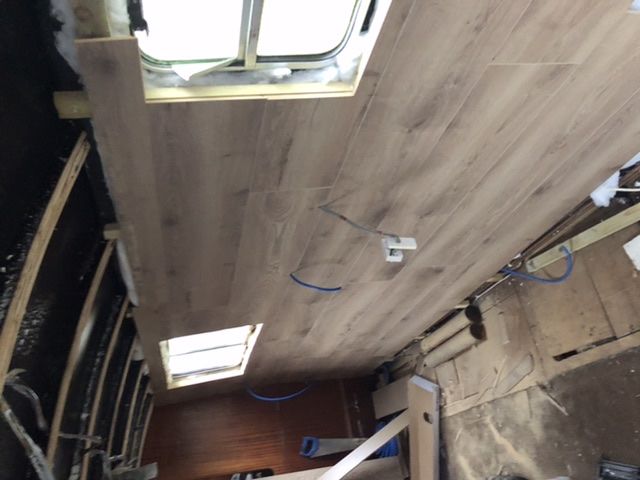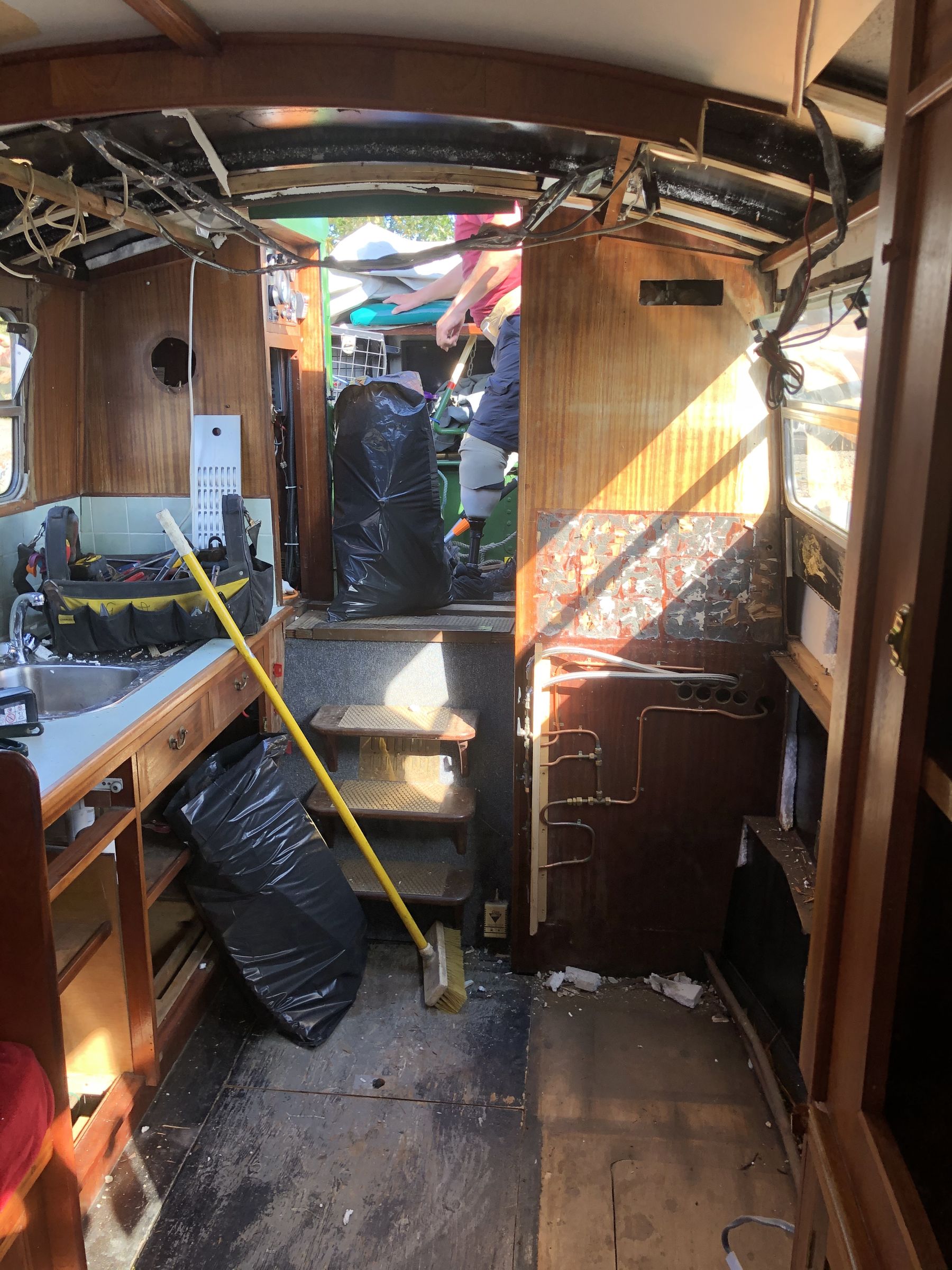

Nemysys
Member-
Posts
105 -
Joined
-
Last visited
Content Type
Profiles
Forums
Events
Gallery
Blogs
Store
Everything posted by Nemysys
-
Apologies, missed the last line. Was preoccupied with the links. thanks
-
Thank you, ideal. Have found everything I need and understand the safety boxes now for the 240v will be placing an order soon
-
That was part of my initial question. What parts were needed, if no back box is required then happy days. I just assumed for both 12v and 240v some rear protection was required
-
Thanks to all. the C-line / CBE dockets... I understand the parts you see and the wiring, but what about the back boxes? I’m using a household domestic idea as a scenario. is the back box square or round?
-
Not been to all the links, but thank you I will do
-
To get them all to match, was looking at CBE / C-Line sockets for both 240v and 12v. Went to a caravan / motor home shop and was a little confused what was needed to make a complete unit.
-
Thanks for the note about cable type, had already been told this, so using combination of existing cable infrastructure and new arctic blue flex.just looking for the socket types and what to get.
-
So far, all going well. Learned a lot going along. Question about Electric sockets. Looking at CBE / C-Line sockets for both 240v and 12v although separated. My dad is an electric; engineer and knows how to wire things up, this is not the issue. as an example, what do I need to buy for a double 13a 240v socket, as in backboxs, faceplates, surrounds etc. and again the same for a 12v outlet, maybe triple, usb, 5a socket and cigarette lighter socket. thanks
-
Thanks all, lots of good info here. yes I was looking to use thick twin and earth domestic cable. (Cooker point etc) Glad I asked now!
-
Currently going through a boat refit. Complete strip out and refit. looking at a Dometic 12v Compressor fridge and a standard home domestic 240v combi microwave. At this stage we can easily provide a 2.5mm2 (or more) ring main style cable for both, about 3-4m in length, we can on board produce 240v 4KVA from shore or engine. Is this cable enough? Also looking at the possibility of installing a macerator toilet but they need 14-25a plus for short periods, cable length here would be 10m or so at 12v, would a 6mm2 cable suffice, or should I go for 10mm2?
-
Thank you to everyone who has replied and commented, I really appreciate it. Please continue, I am learning more and more as I go along. Bearing in mind the boat is 41 years old, we have had her for the last 8 years with minimal updates to the interior. Only panels we have had to change is where a window has leaked over winter. She has had 15mm (ish) expanded polystyrene insulation panels for as long as we have had her, and I would think by looking at fixtures and fittings, another 10+ yeas at least. So I would guess 20+ years of sub-optimal insulation, if not longer! To put it into context, I think we are very lucky. The boat has just had a survey (2019), and comments like “base plate was built with 5.0mm steel, still by ultrasonic measurement is 5.0mm thick”, and “sides were built with 4.8mm and 9.6mm steel, by ultrasonic measurement still are 4.8mm and 9.6mm). I have been told in the past that it is believed the steel used was ‘marine grade’ steel. Am I worrying over nothing? Am I over thinking what insulation is needed? We are not living aboard, and if the weather was that cold, we would go home! We do leave a ‘frost stat heater’ on over winter. Thanks.
-
Hi, just revisiting a thread I started. the refit of our boat has started, she is a 50 footer, built in 1978. Due to new insurers and the fact we are refitting it, the current expanded polystyrene insulation has to be replaced. It has been deemed not fire retardant. The refit is being done in stages, so I cant get someone in to spray foam it all in one, so looking to DIY spray foam it as we go along. My friend who is doing the refit has suggested spray foam insulation as the best option. He is happy to do it. Due to the age and shape of the boat etc, we would have varying thicknesses of foam as we go up and down and along. We don’t live on the boat and don’t use it in the cold weather. I know there will be people saying don’t do it yourself, but we don’t have a choice. Looking to see if there are any recommendations on product and regulations etc. attached image of the first part of the rip out / refurb. Thanks
-
Thanks Tony. are you suggesting something like this? https://www.amazon.co.uk/Dripex-Double-Aluminium-Insulation-Caravan/dp/B07FRBMXY9/ref=asc_df_B07FRBMXY9/?tag=googshopuk-21&linkCode=df0&hvadid=309872438144&hvpos=1o1&hvnetw=g&hvrand=12169923978220820558&hvpone=&hvptwo=&hvqmt=&hvdev=t&hvdvcmdl=&hvlocint=&hvlocphy=1006959&hvtargid=pla-698683054921&psc=1 so from outside in as an example.... 1) steel boat side 2) spray foam adhesive, holding 3) celotex, then tape the joints with aluminium tape 4) this style of bubble wrap, again tape the joints with aluminium tape 5) interior cabin boarding. Or am I going for overkill here? bearing in mind, she is 41 years old, currently has 12-15mm expanded polystyrene sheets, and no noticeable signs of damage. we don’t use her during the winter, but she has had some interior But localised wood damage due to winter moisture. the insulation is more for the boat, rather than for us. If it was that cold, we would be at home. ?
-
Thanks. Yes, they would be from Bedazzled, just around the corner from us. only thing about getting rid of 240v lights is to modernise the boat, get rid of 4ft fluorescent strips and a 1970’s wall light. Alternative is to replace the lights, but they hardly get used. Just looking for opinions and ideas etc. But you do raise a good point, keep options open.
-
Sorry all, as mentioned before, we are going to do a staged refit of our narrow boat, whilst we know roughly what we want, we want to avoid any pitfalls and regrets. Currently we have a mixture of 12v and 240v lighting. Intention was to replace all lights with 12v LED lighting. Proper fused ones of course. is there any reason why we should keep any 240v lighting? I can’t think of any good reason. We are occasional boaters and apart from the marina, very rarely hook-up. Although we can produce 240v from alternator or pure sine wave inverter if required. Also any thoughts about running extra cable lengths while we can access? For example near the bow, we have 2 x 8w 12v tube lights, was going to replace with LED, so expect current draw to be less. etc.
-
Thanks Tony, you’ve hit the nail on the head. The fit out will be done in stages, starting with the galley at the stern. The important thing is to keep the boat usable during the work. Galley, living area, bedroom 1, passage way (past the bathroom), bathroom and 2nd bedroom not at any stage will there be a total rip out. i was thinking the same from what I read, something like spray foam adhesive, celotex and aluminium tape.
-
Excellent, thank you.
-
As per my other posts, starting a boat interior refit shortly. The boat is 50ft steel, 40 years old and needs an update. insulation is currently expanded polystyrene sheets, guessing 12-15mm, what is a good option to improve insulation? are there any restrictions on what should or is allowed to be used? Thinking from a BSS perspective here. Rock wool has been suggested, or the spray on expanding foam. any thoughts?
-
Thanks, we only use the boat for recreational use during the summer. We primarily use it on 240v when the engine is running and then go to gas when stationary / overnight.
-
Thank you, this is great information to give ideas once a part of the current wall is removed, gives options of what can/has been done and what works. still open for other suggestions from anyone to give us options once we know what we are looking at. i will be posting before/during/after photos on my website once we start. And updates on here https://lp21.uk
-
Thanks, yes, there are expanded polystyrene panels, I know that from a small panel which had to be replaced.
-
Thanks, that sounds the best option. Thanks everyone for your comments, I appreciate it.
-
Assuming 100% efficiency, which I know is not the case. batteries in parallel, so 110ah * 2 = 220ah at 12v watts=amps*volts 1000w=240v*4.2a 110ah battery/4.2ah= 26 hours 220ah battery (as they are in parallel)/4.2ah= 52 hours now take efficiency into account, guess at 50%, 13 hours / 26 hours for a 1kw load ypu cannot run a battery flat, so take 50% off of this, 6.5 hours / 13 hours. please if anybody knows better and can correct me, let me know.
-
We have a pure sine wave inverter which we can use with the engine off. Draining batteries. ‘The 240v while the engine is on, is a completely different system, so I presume some sort of travel power? We have at least 2 alternators (maybe 3), (I’m not mechanical, I understand electrics more), I thought one of the alternators was producing 240v anyway?. The box I mentioned is about the size of an a4 bit of paper, blue and white, with a black and red button on it. On and off. It does dip the engine revs when turned on. I will post a picture soon. But is completely separate to the inverter.
-
Thanks, I assumed it was a constant current. suppose that explains why a small gas flame can keep it cold.


